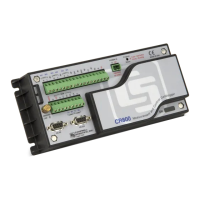Appendix B. Status Table and Settings
520
Table 118. CR800 Settings
Settings are accessed through the Campbell Scientific Device Configuration Utility (DevConfig) via direct-serial and IP connections, or through
PakBusGraph via most CR800 supported telecommunications options.
Setting Description Default Entry
Neighbors Allowed
RS232
ME
SDC7
SDC8
SDC10
SDC11
COM1
COM2
This setting specifies, for a given port, the explicit list of PakBus® node addresses that
the CR800 will accept as neighbors. If the list is empty (the default condition), any node
is accepted as a neighbor. This setting will not effect the acceptance of a neighbor if that
neighbor's address is greater than 3999. The formal syntax for this setting follows:
neighbor := { "(" range-begin "," range-end ")" }.
range-begin := pakbus-address. ;
range-end := pakbus-address.
pakbus-address := number. ; 0 < number < 4000
If more than 10 neighbors are in the allowed list and the beacon interval is 0, the beacon
interval is changed to 60 seconds and beaconing is used for neighbor discovery instead
of directed hello requests that consume comms memory.
Central Routers
This setting specifies a list of up to eight PakBus
®
addresses for routers that are able to
work as central routers. By specifying a non-empty list for this setting, the CR800 is
configured as a branch router meaning that it will not be required to keep track of
neighbors of any routers except those in its own branch. Configured in this fashion, the
CR800 will ignore any neighbor lists received from addresses in the central routers
setting and will forward any messages that it receives to the nearest default router if it
does not have the destination address for those messages in its routing table.
Each entry in this list is expected to be formatted with a comma separating individual
values.

